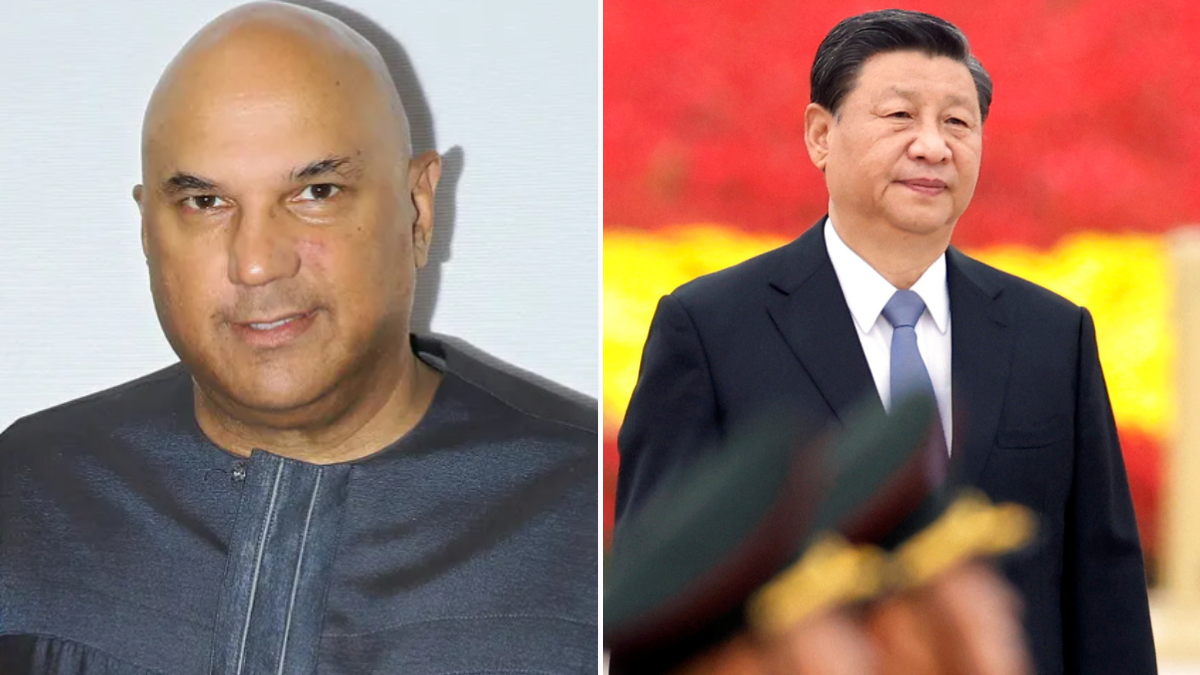Tech Millionaire Neville Roy Singham Accused of Amplifying Chinese Propaganda in India: NYT Investigation Unveils

Tech Millionaire Neville Roy Singham Accused of Amplifying Chinese Propaganda in India: NYT Investigation Unveils
In a shocking revelation, an investigation by The New York Times (NYT) has unearthed evidence suggesting that prominent tech millionaire Neville Roy Singham might have played a role in promoting Chinese propaganda within the borders of India. The investigation, carried out meticulously over several months, brings to light the potential consequences of tech and media influence in the era of rapidly evolving digital information dissemination.

The Power Play Behind Digital Influence
Neville Roy Singham, a well-known figure in the tech industry, has been a driving force behind several successful ventures. His rise to prominence is rooted in the digital revolution that has transformed the global economy. However, the recent investigation by NYT points towards a darker aspect of Singham’s influence. The report sheds light on his alleged involvement in amplifying Chinese propaganda within India, a nation grappling with its own complex socio-political landscape.
The Anatomy of Influence
The investigation delves into the intricate web of digital influence, exploring how technology and media platforms can be harnessed to shape public perception. Singham’s alleged role in this scenario centers around his strategic use of social media platforms, where his messages reportedly aligned with narratives often propagated by Chinese state-controlled media outlets. This apparent alignment raises questions about the extent to which tech moguls can wield their influence to potentially sway public opinion, whether intentionally or inadvertently.
A Tug of War for Hearts and Minds
China’s growing influence in various global spheres has been a subject of debate and concern for many countries, and India is no exception. The investigation highlights how Singham’s social media presence seemed to echo themes that favored China’s stance on contentious international issues. This tug of war for hearts and minds in the digital realm exemplifies the broader battle for influence between nations, where narratives are carefully crafted and disseminated to secure strategic interests.
Navigating the Grey Areas of Digital Influence
The report also underscores the challenges posed by the ever-evolving landscape of digital information. As platforms become conduits for information and viewpoints, discerning the authenticity and intent behind content becomes increasingly challenging. The investigation suggests that Singham’s posts, while not explicitly aligning with Chinese propaganda, appeared to share similarities in narrative, raising questions about the nuances of influence and the extent to which digital platforms can be manipulated.

Tech Moguls as Amplifiers of Narratives
The case of Neville Roy Singham highlights the growing role of tech moguls as potential amplifiers of narratives. With a vast reach and influence, their online presence can sway public sentiment and shape opinions. As technology becomes increasingly integrated into daily life, this raises concerns about the ethical responsibilities of those who possess significant digital influence. The investigation prompts a broader conversation about the checks and balances needed to ensure that digital platforms are not misused to further political agendas or propagate propaganda.
The Specter of Misinformation
In an era where misinformation and disinformation can spread like wildfire, the role of influential individuals gains heightened significance. The investigation reveals how Singham’s posts might have inadvertently contributed to the spread of misleading information. This serves as a stark reminder that even well-intentioned individuals can inadvertently become conduits for narratives that have far-reaching implications.
A Call for Digital Literacy
The case of Neville Roy Singham underscores the pressing need for digital literacy in an age where online platforms are primary sources of information for many. Understanding the complexities of digital influence, recognizing potential biases, and critically evaluating the content we encounter are crucial skills in navigating the modern information landscape. As technology continues to shape our interactions and perceptions, being informed and discerning consumers of information is paramount.
The Grey Areas of Influence
The investigation into Neville Roy Singham’s alleged role in amplifying Chinese propaganda within India brings to light the grey areas of influence that exist in the digital realm. While the investigation has not conclusively proven intent, it raises pertinent questions about the power wielded by influential individuals in shaping narratives. As society grapples with the implications of this digital influence, it becomes evident that a nuanced approach is required to strike a balance between free expression and responsible dissemination of information.
The investigation’s findings also underscore the broader challenges facing democracies worldwide in the age of digital connectivity. The seamless dissemination of information, both accurate and misleading, through social media platforms raises questions about the ability of governments and regulatory bodies to effectively monitor and address instances of potential propaganda. As the lines between personal expression and broader influence blur, there is an urgent need to establish clear guidelines that safeguard the integrity of public discourse without infringing upon free speech.
)
Furthermore, the case of Neville Roy Singham prompts reflection on the delicate balance between economic success and ethical responsibility. Tech millionaires and industry leaders often wield substantial influence due to their entrepreneurial achievements. However, this influence carries with it a moral imperative to ensure that their actions do not inadvertently contribute to the propagation of misleading narratives or the erosion of democratic values. As the digital age progresses, the ethical dimensions of personal influence within a broader societal context become increasingly paramount.
One must also consider the implications of cross-border digital influence and its potential to impact international relations. The investigation highlights the interconnectedness of nations in the digital age, where a single post or message can transcend geographical boundaries and influence opinions on a global scale.
This raises questions about the role of tech industry leaders in shaping the narratives of not just their own countries, but the narratives of nations far beyond their borders. In this context, discussions around digital diplomacy, responsible communication, and international cooperation gain renewed significance.
In conclusion, the case of Neville Roy Singham’s alleged promotion of Chinese propaganda within India serves as a wake-up call for individuals, governments, and societies alike. It illuminates the intricate dynamics of digital influence, the challenges posed by misinformation, and the responsibilities that accompany significant online presence.
As we navigate the uncharted waters of the digital age, it is imperative that we approach digital interactions with discernment, accountability, and a commitment to upholding the values that underpin democratic societies. Only through collective awareness and responsible action can we safeguard the integrity of public discourse in an increasingly interconnected world.




